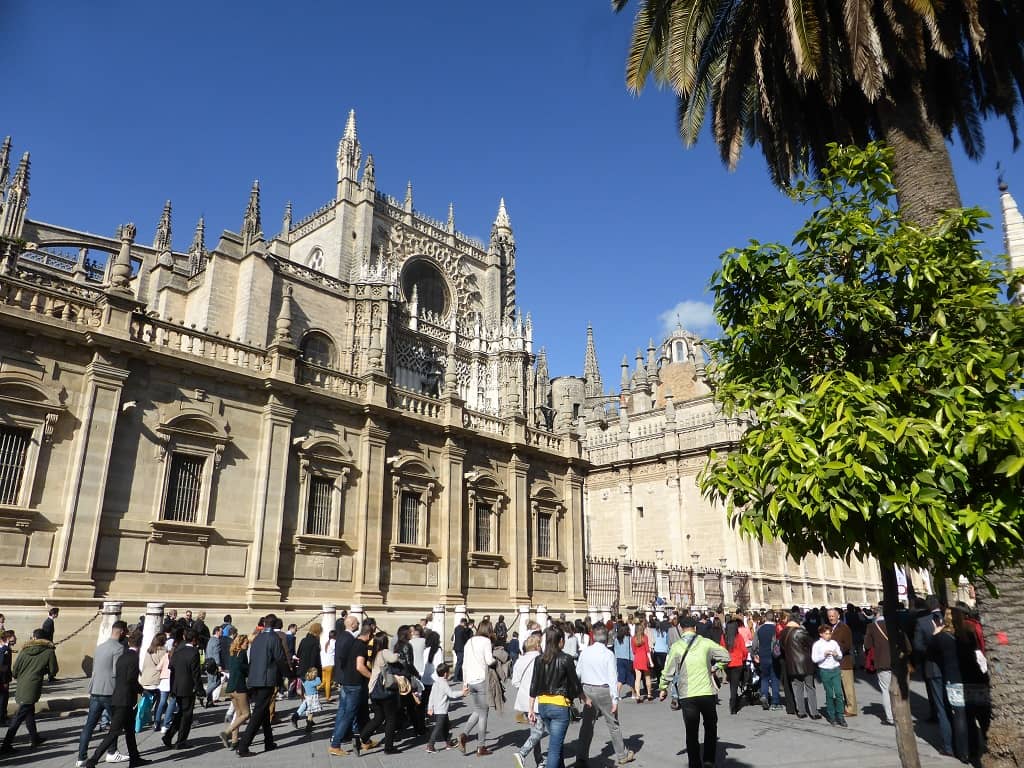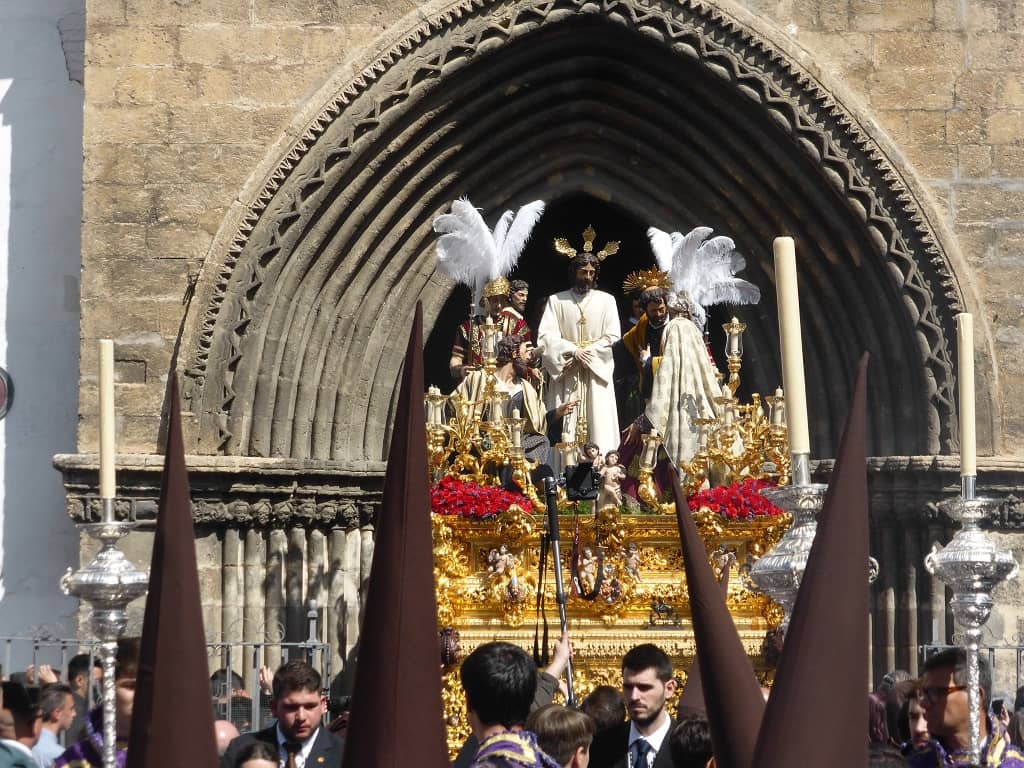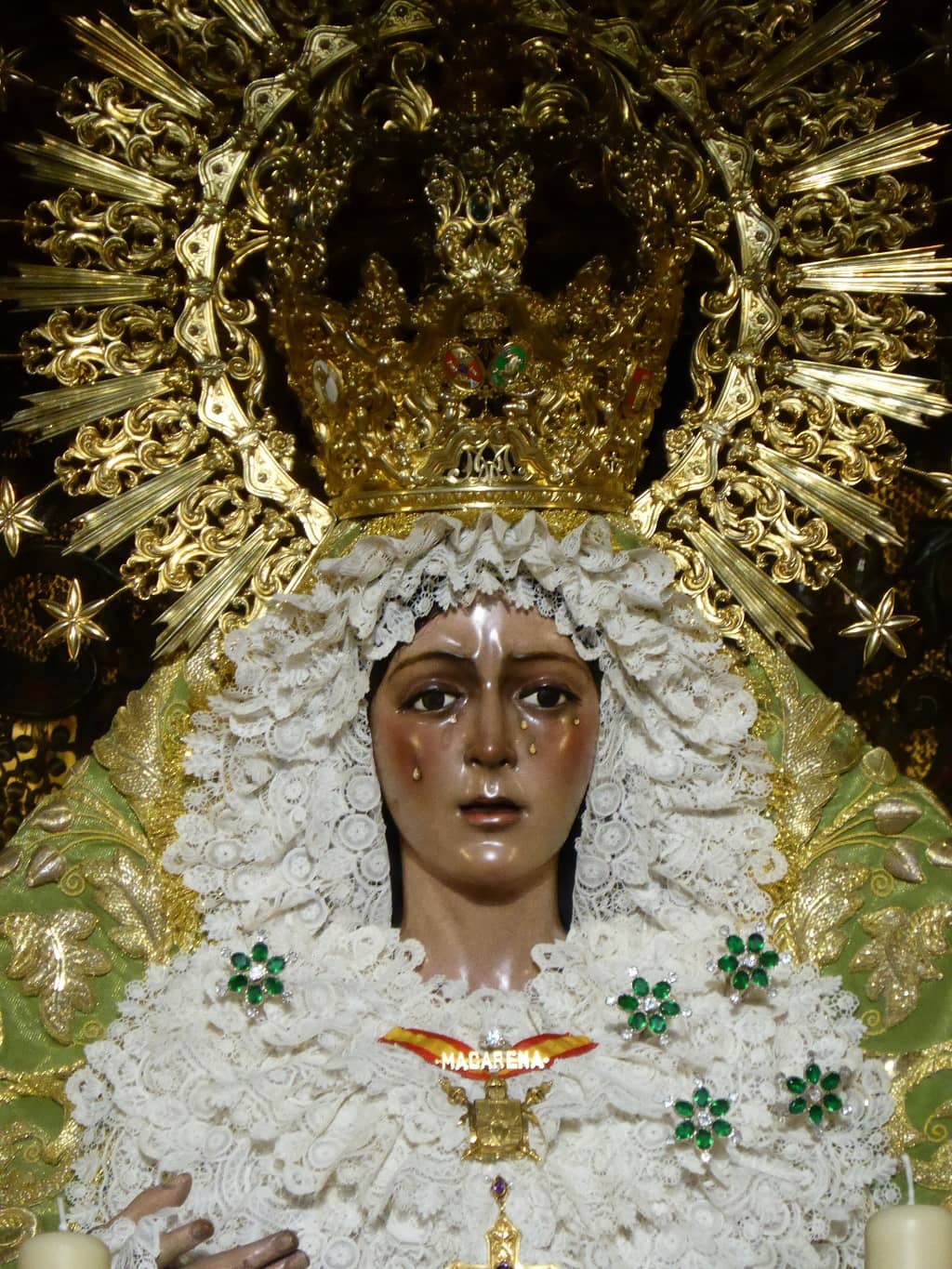The highlight of the week is the night of Holy Thursday, when the processions set out after midnight to arrive at the cathedral on the dawn of Good Friday, called La Madrugá.
Already on Thursday morning, women dressed according to the dress code, reflecting the reverence and grief for Jesus. It was even better than my expectations. The seňoritas had mini and seňoras longer dresses of black colour, black stockings, shoes and some also gloves. They wore their hair in a bun, shielded with a huge peineta (decorative comb) on which a mantilla rested - a beautiful black lace veil embellished with a silver brooch. Outfit was complemented with silver jewellery, and it is said that each woman should carry a rosary with her. The men wore black suits and a black tie on this day.
The habit of wearing a mantilla seemed to fall into oblivion, however, in the 1980s returned. I was convinced that only older women would wear it, but I am not at all surprised that the young Spanish girls embraced the tradition, because it is very sexy and feminine.
So when I saw the words "Discount mantillas" at one store, I didn't hesitate (also because the most beautiful, hand embroidered pieces can costs hundreds of euros); I bought a veil, a comb and a brooch, had the willing saleswomen explain me the know-how, and then ran to the hotel to change.
I put my hair into a bun, affixed a peineta and threw a mantilla over it; clasped it in the back, and went out. Of course, the whole masterpiece fell apart after three steps. I returned to the room and pinned the lace with two hairclips I accidentally had, but I felt like a cheater. How is it possible that on the heads of the Spanish women it remains in place for many hours?!
On the street, my veil fell again, so I asked local girls for advice (three times). They were very helpful, immediately took out hairgrips and pins from their mini handbags - so they used them, too - and got to work. It was like a course, everybody has a different way and they all have their own tricks. The bun must be as high as possible so that the peineta protrudes high above the head. The veil rests on the comb; its upper edge is either tucked between the comb and the head (and pinned with a hundred bobby pins) or draped like a bonnet on the top (and pinned with a hundred bobby pins). At the back, the two longest ends of the mantilla are fastened with a brooch, one "teacher" pinned it even to my shoulders. Then everything was holding as it should and I stole the show; I noticed that while I was taking pictures of a paso, sevillanos were taking pictures of an exotic foreigner : ).
















































































































































